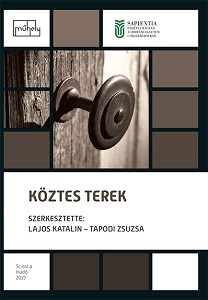Narratív struktúra és identitás Illyés Gyula Puszták népe (1936) című művében
Identity Crisis and Narrative Forms in Interwar Hungarian Literature. Narrative Structure and Identity in Gyula Illyés’s Puszták népe
Author(s): Csilla Tóth
Subject(s): Language and Literature Studies, Studies of Literature
Published by: Scientia Kiadó
Keywords: identity crisis; interwar Hungarian literature; narrative forms; narratorial functions;
Summary/Abstract: The study examines the relationship between the implied author and the narrator in Gyula Illyés’s work titled Puszták népe [People of the Plains], using the approach of rhetoric narratology. Together with the first volume of Márai’s Egy polgár vallomásai [Confessions of a Bourgeois], the prose work of Illyés is an outstanding piece of interwar Hungarian literature; both can be regarded as the modern manifestation of representational literature. Whereas Márai’s work tried to repair the broken model of the bourgeois identity, Illyés gave voice to a silent identity which had not even existed in a socio-cultural sense.Rhetorical narratology considers literary works as intentional communication taking place in multiple interacting channels. Phelan (2011, 2018) redefined the narrative communication model (Chatman 1978) in which the narrator loses its privileged role. In his model, communication takes place between the implied author/the author, the authorial audience, and the actual reader. In his conception, the narrator is only one of the many ways of creating impact; the implied author can be regarded as a streamlined version of the author characterized by a certain way of writing. The implied author makes every decision, even on how to use the figure of the narrator. Being a mixed genre work, Puszták népe is particularly suitable for demonstrating the role of the implied author as the source of poetic effects and narrative communication. The main poetic and ethical principle is a confrontation involving all components of narrative communication. The narrator’s autobiographical narrative is mixed with the non-literary texts inserted by the implied author. The dynamics comes from the interaction between the texts taken from two different sources, in the course of which various communication channels come into play and start to interact with each other. The texts are inserted into the autobiographical narrative by the narrator, but the real intent is that of the implied author who tries to achieve confrontation through the inserted texts. The juxtaposed texts are contrasted with each other by the authorial audience to achieve the implied author’s goal: the presentation of an isolated subculture.
Book: Köztes terek (2019. április 26–27., Csíkszereda)
- Page Range: 79-91
- Page Count: 13
- Publication Year: 2020
- Language: Hungarian
- Content File-PDF

